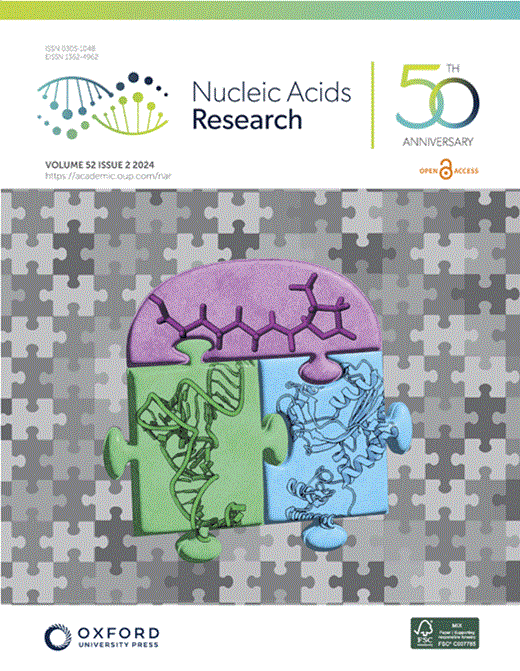Activation, incompatibility, and displacement of FIB replicons in E. coli
IF 16.6
2区 生物学
Q1 BIOCHEMISTRY & MOLECULAR BIOLOGY
引用次数: 0
Abstract
Multi-replicon sex-factor F is the archetype of the largest plasmid group in clinical Enterobacteriaceae. Such plasmids spread antimicrobial resistance (AMR) and virulence functions in commensal bacteria of humans and animals. Displacing (curing) these plasmids by blocking replication and neutralizing addiction is successful with the curing cassette on a high-copy-number vector but, with conjugative IncP-1 plasmid RK2 as vector for our “anti-F cassette”, displacement of F’prolac is inefficient unless curing-plasmid copy-number is raised 1.5- to 2-fold. Here we report that it is the anti-FIB segment, originating from FIB-FII plasmid pO157, which needs potentiation. We show that the FIB replicon in F (F-FIB) is defective due to a sub-optimal rep ribosome-binding-site (rbs) but can be activated by FIB-Rep protein expressed from our anti-FIB segment joined to RK2. Deleting FIB-rep from the anti-F cassette removed the need for potentiation. A pO157-FIB single-replicon plasmid was displaced efficiently by the complete anti-F cassette without potentiation, but an F-FIB plasmid, mutated to have a pO157-like rep rbs, was not, indicating that sequence divergence between F and pO157 FIB replicons has weakened their negative cross-reactivity. Thus, raising vector copy-number slightly may be sufficient to increase displacement of plasmids similar but not identical to the sequences in the curing cassette.求助全文
约1分钟内获得全文
求助全文
来源期刊

Nucleic Acids Research
生物-生化与分子生物学
CiteScore
27.10
自引率
4.70%
发文量
1057
审稿时长
2 months
期刊介绍:
Nucleic Acids Research (NAR) is a scientific journal that publishes research on various aspects of nucleic acids and proteins involved in nucleic acid metabolism and interactions. It covers areas such as chemistry and synthetic biology, computational biology, gene regulation, chromatin and epigenetics, genome integrity, repair and replication, genomics, molecular biology, nucleic acid enzymes, RNA, and structural biology. The journal also includes a Survey and Summary section for brief reviews. Additionally, each year, the first issue is dedicated to biological databases, and an issue in July focuses on web-based software resources for the biological community. Nucleic Acids Research is indexed by several services including Abstracts on Hygiene and Communicable Diseases, Animal Breeding Abstracts, Agricultural Engineering Abstracts, Agbiotech News and Information, BIOSIS Previews, CAB Abstracts, and EMBASE.
 求助内容:
求助内容: 应助结果提醒方式:
应助结果提醒方式:


